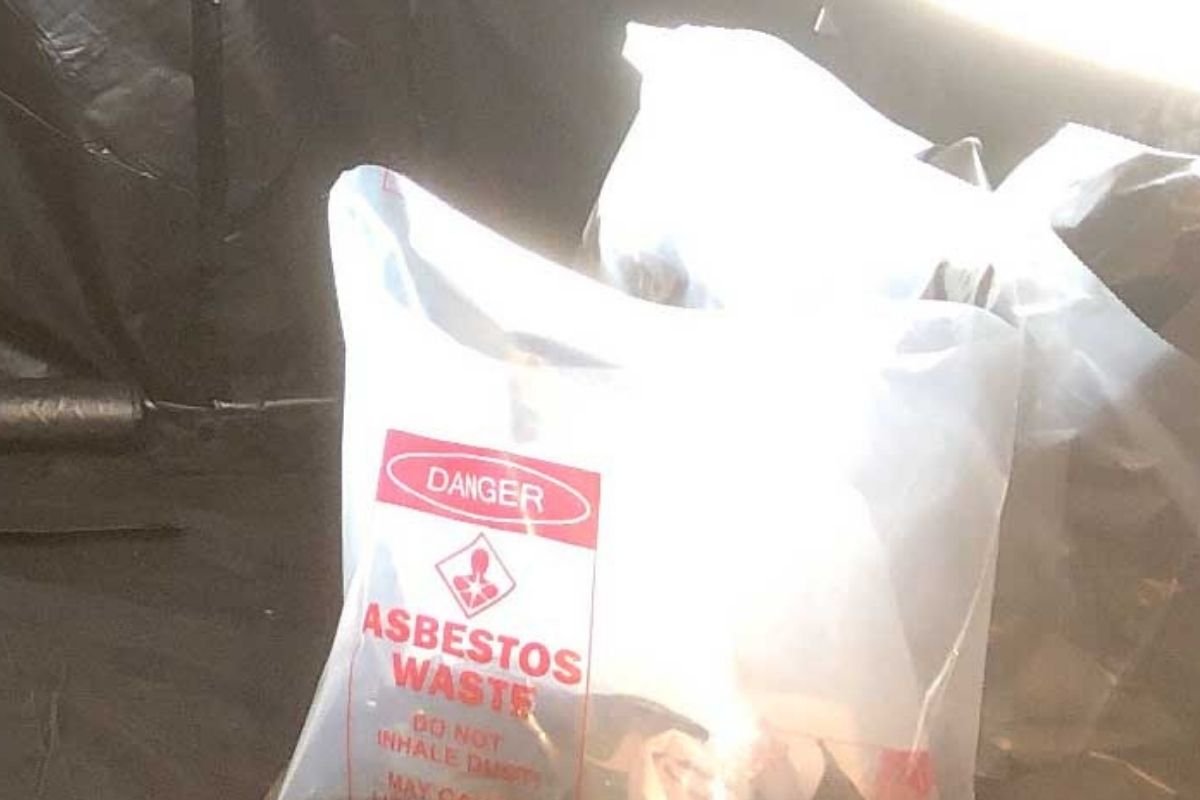Bagging Instructions for Asbestos-Containing Material (ACM)
It’s strongly recommended that you hire a WorkSafe NZ licensed asbestos removalist to undertake asbestos removal around your home or business. They understand the proper precautions to take and know how to keep everyone safe.
However, if your home contains non-friable asbestos in less than 10m2, you can legally remove it yourself. However, what are you supposed to do with it once it’s removed? Learn more about bagging instructions for asbestos-containing material (ACM) and more below.
How to Safely Wrap Asbestos Materials for Disposal
If you’ve never had to remove or dispose of asbestos before, you may not be aware that you can’t just throw it away with your general household waste. Asbestos can be hazardous to health, so you must take extra steps and precautions for safety reasons.
Anything you’ve used while removing asbestos, such as single-use disposable masks, coveralls, plastic sheets, and cloths, should be double-bagged in heavy-duty plastic bags. WorkSafe recommends a minimum thickness of 200 µm with a maximum size of 90cm wide by 1.2m long.
Make sure the bag is no more than half filled and remove excess air to reduce the risk of handlers inhaling dust.
Once you’ve filled the bag, twist the top of it tightly and fold the necks over in a gooseneck twist.
Seal the bag with adhesive tape to fully enclose the ACM inside.
Mark the outer bag with an ‘asbestos waste’ label. Often, this label says something like ‘Caution, Asbestos. Do not open or damage the bag. Do not inhale the dust.’
How to Safely Wrap Large Asbestos Materials
Not everything you remove from your home within that 10m2 perimeter will fit in a 90cm by 1.2m bag. However, you must still take the same amount of care with packaging larger materials as you would with smaller ones.
Never break the materials down to make them fit in a bag. This can cause dust to be released into the air.
Wrap large pieces of ACM, such as asbestos sheets or asbestos-lagged pipes, in heavy-duty polythene sheeting of at least 200µm.
Once they’re wrapped, label the bundles with asbestos warning labels and wrap them in tape.
How to Wrap Asbestos Waste in Bins and Drums
If you’re dealing with a large volume of ACM (and are licenced to do so), or you’re a homeowner removing less than 10m2 of non-friable asbestos and placing it in a bin or drum for disposal, you’ll need to know how to do it properly and safely.
Put the drum, skip, or bin as close to the work area as possible
Line the drum, skip, or bin with polythene sheeting of at least 200µm
Spray the ACM with water to prevent dust from forming
Seal the rims of drums and wet-wipe the outer surfaces
Move drums with a drum-lifter or trolley, not manually
What to Do With Asbestos in NZ Once You’ve Bagged It?
Once you’ve followed all regulations for safe asbestos removal and bagged it, you’re likely ready to dispose of it. How you go about this process can depend on where you are in Aotearoa since every region and council can be different.
For more exact information, check out your local council’s website. You will need to dispose of it at an authorised disposal site, which is one that complies with the Resource Management Act. Call in advance so that on-site staff can prepare for its disposal.
Don’t:
Throw ACM in a skip, wheelie bin, recycling bin, or kerbside bag
Throw ACM out at a transfer station with your general waste
Move the ACM from its original location until you’ve double-wrapped it in new polythene sheets or bags of at least 200µm
Bring unwrapped asbestos to an authorised disposal site
Assume that all transfer stations accept asbestos waste
Turn up without making contact with a disposal site
How to Dispose of Friable Asbestos
Friable asbestos refers to broken, crumbling, or damaged ACM that you might find in your home or business during renovations, repairs, or wear and tear. Handling and disposing of friable asbestos requires a much different approach.
In fact, you may only handle and dispose of friable asbestos waste if you are a licenced asbestos removalist, regardless of whether it’s less or more than 10m2. In some regions, you may only dispose of asbestos if you have a permit and you’re an approved certified asbestos remover.
If you have friable asbestos to be removed from your home, safely bagged, and taken to an approved disposal site, you will need to contact an asbestos removalist.
Call Licenced Removalists for Help
Removing and disposing of asbestos can be a complicated and even dangerous process. While you may bag ACM as long as it’s non-friable and less than 10m2, you may see the value in outsourcing this high-risk job to trained professionals who take all necessary steps to keep everyone safe.

